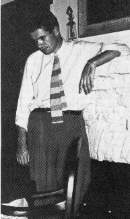It seems fitting that the crater named Parsons is on the Moon’s dark side. It’s named after John W. Parsons, a youthful rocket builder who joined Texan Frank Malina in the early experiments that would lead to the creation of the Jet Propulsion Laboratory. Parsons, Malina and a childhood friend named Ed Forman patched together equipment from junkyards and at one point tried to script a movie about going to the Moon, hoping that selling it to Hollywood would fund their idea of launching a rocket to Earth’s upper atmosphere. The three formed the Rocket Research Group at the Guggenheim Aeronautical Laboratory at Caltech, where Theodore von Kármán, the Laboratory’s director, gave them lab space and campus equipment to pursue their dreams.
 This was back in the 1930’s, when the group’s rocket motors were being tested at the Arroyo Seco near Pasadena. Around that time, Chinese graduate student Tsien Hsue-shen (who would go on to become the father of Chinese rocketry) joined the team, producing key ideas that would lead to ever more powerful engines. As war approached, the so-called ‘Suicide Squad,’ as they were known, wound up with government funding. Parsons and colleagues tested rockets in the desert and ran early experiments with rocket-assisted takeoff methods for aircraft. Along the way, they developed forms of rocket fuel that were easier and safer to handle and led directly to the solid fuels used in spacecraft like the Space Shuttle today. In 1945 the WAC Corporal rocket reached over 200,000 feet as a result of their work.
This was back in the 1930’s, when the group’s rocket motors were being tested at the Arroyo Seco near Pasadena. Around that time, Chinese graduate student Tsien Hsue-shen (who would go on to become the father of Chinese rocketry) joined the team, producing key ideas that would lead to ever more powerful engines. As war approached, the so-called ‘Suicide Squad,’ as they were known, wound up with government funding. Parsons and colleagues tested rockets in the desert and ran early experiments with rocket-assisted takeoff methods for aircraft. Along the way, they developed forms of rocket fuel that were easier and safer to handle and led directly to the solid fuels used in spacecraft like the Space Shuttle today. In 1945 the WAC Corporal rocket reached over 200,000 feet as a result of their work.
Parsons, though, remained an enigma. Even as the Jet Propulsion Laboratory and the aerospace company Aerojet were forming around him, he drifted into mysticism. The rocketeer became the leader of the US branch of the Ordo Templi Orientis, a cult that performed Gnostic ceremonies and dabbled in drugs, including peyote and hallucinogens. Aleister Crowley was the leader of this group; Parsons would move into a house along with other followers of the well-known mystic, becoming involved as well with science fiction writer (and scientology founder) L. Ron Hubbard. Author Robert Heinlein was also a friend, and shared some of his interest in the occult.
By now Parsons had lost his security clearance and was unable to perform serious work in rocketry. He worked for a time in Hollywood, but would die in 1952, aged 37, in an explosion some still regard as mysterious, though odds are it was an accident. His tale is told in Strange Angel: The Otherworldy Life of Rocket Scientist John Whiteside Parsons, by George Pendle (New York: Harcourt, 2005). Pendle is a journalist for the Financial Times and the Times of London. He argues for the accident theory of Parsons’ death, saying that he was simply distracted by an upcoming trip and working without his usual equipment when the blast occurred in a home laboratory. You can read Kevin Silber’s review of Pendle’s book at Tech Central Station.
What to make of this odd life? There are some who believe Parsons’ contributions have been underplayed. As a rocket scientist, his contribution was substantial. My own take on this complex figure has always been that Parsons pretty much wrecked his life on his own terms, but I haven’t read Pendle yet, so I’ll just cite Silber’s assessment on Tech Central:
Parsons’ life was a sustained struggle against conventional thinking. He rightly saw that rocketry had enormous potential, even as the scientific establishment scoffed. He grasped for the unorthodox in the mystical and personal as well, with far less to show for it. Still, his strange life left humanity better equipped to reach beyond the confines of this planet.

